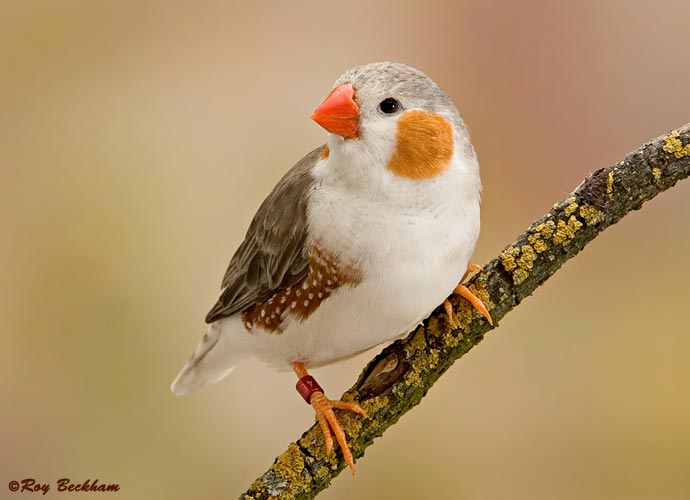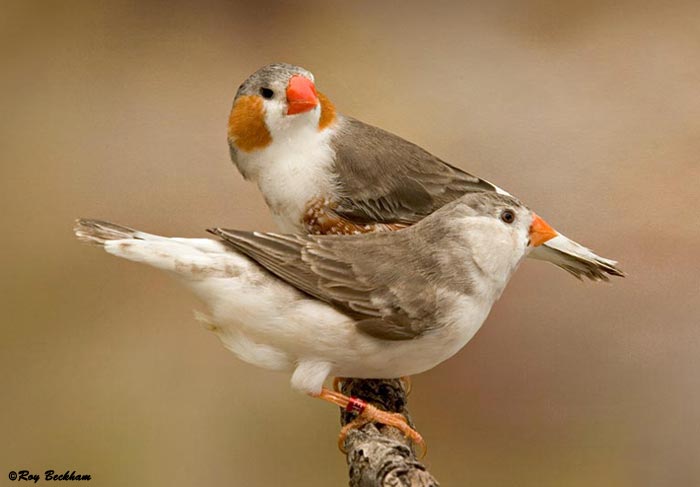




 |
|
|||||||||||||||||||||
 |
|
|
|
|
|
|
|
|
|
|||||||||||||
|
|
|
|
|
|
||||||||||||||||||
|
|
|
|
|
|
|
|
|
|
||||||||||||||
|
|
|
|
|
|
||||||||||||||||||
|
|
|
|
|
|
|
|
|
|
||||||||||||||
|
|
|
|
|
|
||||||||||||||||||
|
|
|
|
|
|
|
 |
|
|||||||||||||||
 |
 |
|
||||||||||||||||||||
|
|
|
|
||||||||||||||||||||
|
|
|
|
|
|
|
|
|
|
|
|
|
|
|
|
|
|
|
|
|
|
|
|
| Penguin Zebra Finch | ||||
 |
||||
| Gray Penguin Zebra Finches male | ||||
|
Mutation Effects Male: The Penguin mutation suppresses all gray and black pigments (eumelanin) on the lower portion of the bird, including the breast and cheeks. The orange cheek patches and flanks are still present, but the breast bar and tear marks are absent. Penguins will have a frosted a frosted appearance to the back of the wings and the tail shows some dilution and frosting as well. The belly will be a clean white even in combination with fawn. Female: Like the male, the gray pigments are removed from the lower portion, breast and cheek patch area. The back and tail is frosted like the male. Fledgling: It is very odd to see young Penguins as they are not what you might first expect. They look very much like normals, complete with tear marks and gray in the cheeks. The only clue is the frosted tail of the fledgling. The Penguin pattern appears after the bird molts into its adult plumage.
Identifying Splits Combinations The Penguin mutation can be combined with the Orange Breasted mutation and will show that the breast bar is still there, just suppressed in black. To each his own here, I have seen pictures of the combination but cannot say that I was impressed. It seemed to take away some of the appeal of the Penguin mutation. The main thing to keep in mind when thinking of combining other mutations with the Penguin mutation is that the Penguin's appeal lies in the pattern. Any mutation that is contrary to that pattern will often spoil the appearance of the Penguin. This includes Pieds, Florida Fancies, CFW, Fawn Cheek and of course Whites. I also do not think that combination with dilute varieties will offer much to the Penguin and these include Dominant Silver, Recessive Silver and Lightback. Two other mutations to consider would be the Black Face and Black Cheek mutation. While I have not seen the combination of BF and Penguin, I believe that the Penguin mutation would suppers all of the features of the Black Face. The combination of Black Cheek and Penguin results in the BC features being suppressed. (See below) Black Cheek Penguin (click to view)
Notes The Penguin mutation was discovered in Australia, but due to lack of interest the mutation was not bred and subsequently lost. Furthermore, since Australia has an import ban on birds, they cannot bring in the Penguin or other mutations from other countries. Black Breasted females and young are often confused with Penguins because of their light-colored cheek patches. BB hens can be distinguished by their tails and by the color of the cheeks. Although BB birds have light colored cheeks, they are not white. Furthermore, Penguin fledglings do not have the open cheek area, but have tear marks that later molt out. (Black Breasted female) & (Black Breasted fledgling) |
 |
|||
| Gray Penguin Zebra Finches (male top, female below) | |||
